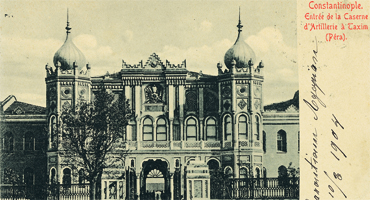29 January 2016
Hrant Dink Foundation, Anarad Hığutyun Building, Havak Hall
The Hrant Dink Foundation organized, as a part of its 'Revealing and Advocating the Multi-Cultural Heritage of Anatolia' project, a new panel called ‘Topographies of Memory: Exchanging Knowledge and Best Practices’. Recent approaches to cultural heritage preservation and memory studies have started to incorporate digital technologies into their strategic and methodological repertoire in order to retain the endangered memory of the neglected or non-extant sites. This panel addressed some of the interactive ways in which the memory of places is being revived in current practices.
In the 1st session, Jordi Guixé Corominas and Oriol Lopez Badell (European Observatory on Memories - University of Barcelona) introduced Memoria BCN project. In this session, the Memoria BCN project was presented shortly and the motivations and experiences behind it were shared with the participants.The Memoria BCN is a website and an app for smartphones that is designed to disseminate information about sites of memory in the city of Barcelona. It contains ten self-guided tours for discovering historical and memorial sites of the 20th century in a city.
In the 2nd session, Ayşe Gül Altınay and Dilara Çalışkan from Sabancı University presented the project of ‘ Curious Steps: Gender of Memory’. Based on the year-long experience of the Gender and Memory Walk of Beyoglu and the newly designed tours of the Armenian Memory Tour of Beyoglu and the Gender and Memory Walks of Balat and Kadikoy, conducted under the auspices of ‘Curious Steps’ coordinated by the Gender Forum at Sabancı University, the paper discussed how connections across individuals and movements from different backgrounds, times and places can be mobilized with a particular focus on gender.
In 3rd session, Vahakn Keshishian from Hrant Dink Foundation informed the participants about Turkey Cultural Heritage Map which was made by the foundation. In this presentation the scope and the uses of the map was introduced. In addition, brief discussion of the methods of and the challenges to the making of this map. The map has been launched by the Hrant Dink Foundation’s within the scope of 'Revealing and Advocating the Cultural Heritage of Anatolia' project in 2014. An interactive online map that visualizes churches, synagogues, monasteries, schools, orphanages, and hospitals that served the Armenian, Greek, Syriac and Jewish communities of Anatolia.
*The panel was hold in English, there was simultaneous translation.




